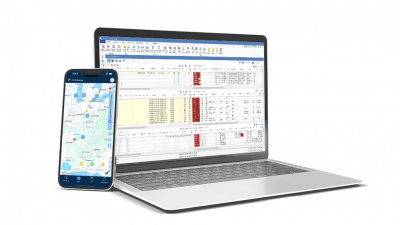Inflation has hit the food industry especially hard. Since the pandemic, consumer food prices have risen 15% as food manufacturers have grappled with a 68.2% increase for quality ingredients. A recent survey of food shippers, manufacturers, and others in the industry found that more than 75% are concerned (or very concerned) that inflation and geopolitical uncertainty will negatively affect their fourth quarter.
Inflation isn’t the only worry. Almost half of the survey respondents noted their biggest challenge is labor and talent management. Nearly 40% said transportation capacity issues were their top challenge, followed by supply and demand planning, transportation rate issues, and warehousing capacity issues.
Food shippers are especially concerned with supply chain visibility. Temperatures must be maintained at strict levels when transporting products from the source to processing facilities for packaging and distribution to wholesale, retail, and food service channels. While food shippers can’t control the cost of raw materials, they can keep cost and quality under control by implementing new solutions.
Shipment visibility is always important but is especially critical for temperature-sensitive items that are subject to higher shipping costs from ensuring quality is maintained to the final destination.
Some products will need to be kept at specific temperatures during the entire process, while others have some flexibility. Some might need to be kept cold but not frozen, while others require specific cooling solutions that others don’t. Cold chain logistics are intricate and complex, and without the right technology in place to monitor the entire process, issues can quickly arise.
Shippers are increasingly using end-to-end visibility platforms to ensure high-cost, highly sensitive products are controlled throughout the chain, according to Supply Chain Dive. These platforms can integrate with various tracking devices and sensors to capture data efficiently in a timely manner. New technologies enable consistent, accurate real-time temperature monitoring from the warehouse to the trailer and to locations where products are routed. These visibility solutions eliminate surprises, reduce waste, and enable a smoother beginning-to-end operation.
Improve End-to-End Shipment Visibility
Food shippers that leverage digital supply chain platforms can integrate them with their transportation management systems (TMS) to monitor shipment temperatures and predict transit times and dwell times at shipping and receiving facilities.
Shippers can also place their own tracking devices in the trailers of motor carriers to capture locations, temperatures, and arrivals and departures at their facilities. This way, before detention events occur from carriers, the shipper knows which loads are behind schedule to get loaded or unloaded more quickly.
If there’s a temperature-sensitive product that’s been sitting for too long and the temperature is dropping, the product may be nearing its window of spoiling. The shipper can receive a real-time alert about this situation and communicate with the necessary parties to move quickly and prevent spoilage.
With a deep, detailed level of visibility at each stage of the shipment process, the shipper can proactively resolve situations and pay carrier detention charges if needed. By being more efficient at loading and unloading carriers, food shippers are better able to control logistics costs; otherwise, they’ll end up paying higher rates and accessorial fees from carriers.
If the average monthly facility dwell time is four hours for delivery and pickup stops, for example, that’s money lost as carriers are sitting idle. Supply chain visibility platforms that integrate with TMS systems automatically track shipments and help avoid idle time and accessorial costs.
Connect to Optimize Cold Chain Logistics
A shipper transportation management system (TMS) that provides end-to-end shipment visibility can help food shippers use time more efficiently and control costs. Moreover, a cloud-based, AI-supported solution that can automate and optimize inbound and outbound freight across all modes will provide a newfound level of visibility that’s critical for temperature-sensitive shipments.
By integrating with different supply chain systems, a cloud-based TMS can give companies a single source of truth to manage the complexity of food logistics and keep high costs at bay—something every shipper is aiming for today.
Interested in discovering more? Request a demo and let’s connect.



